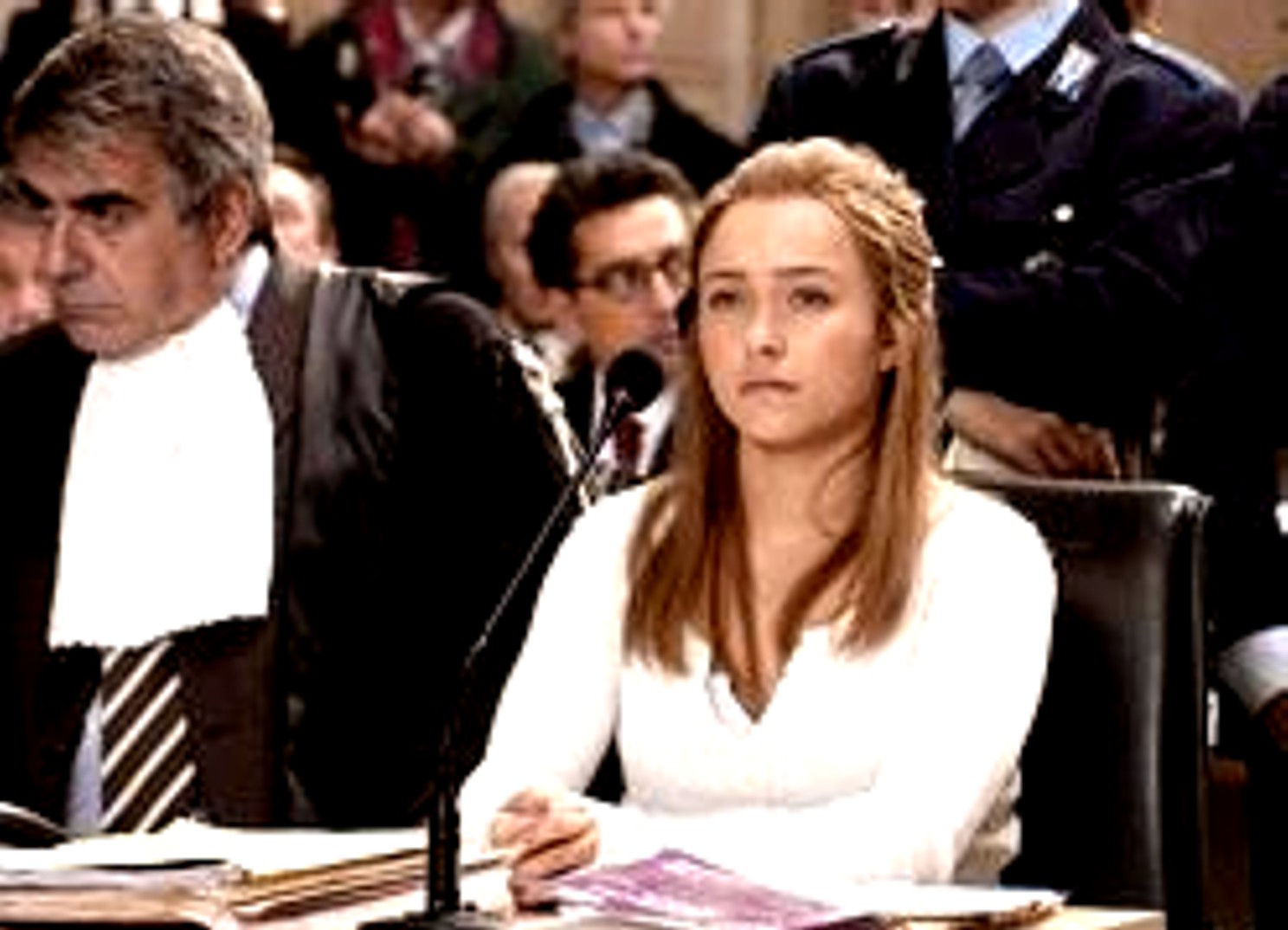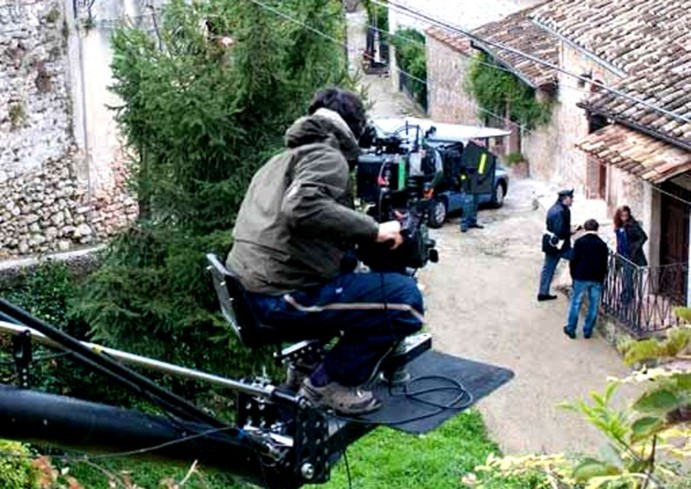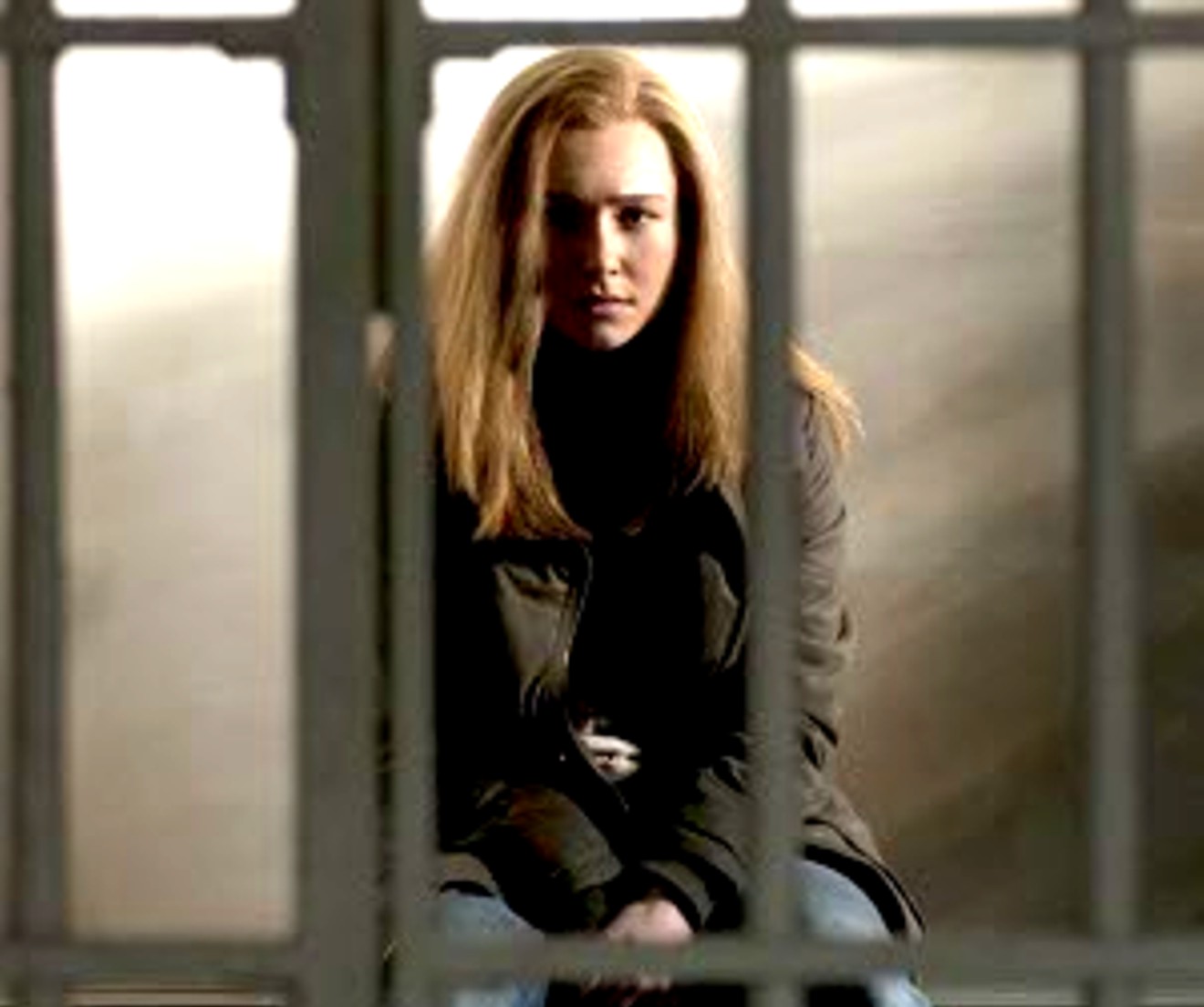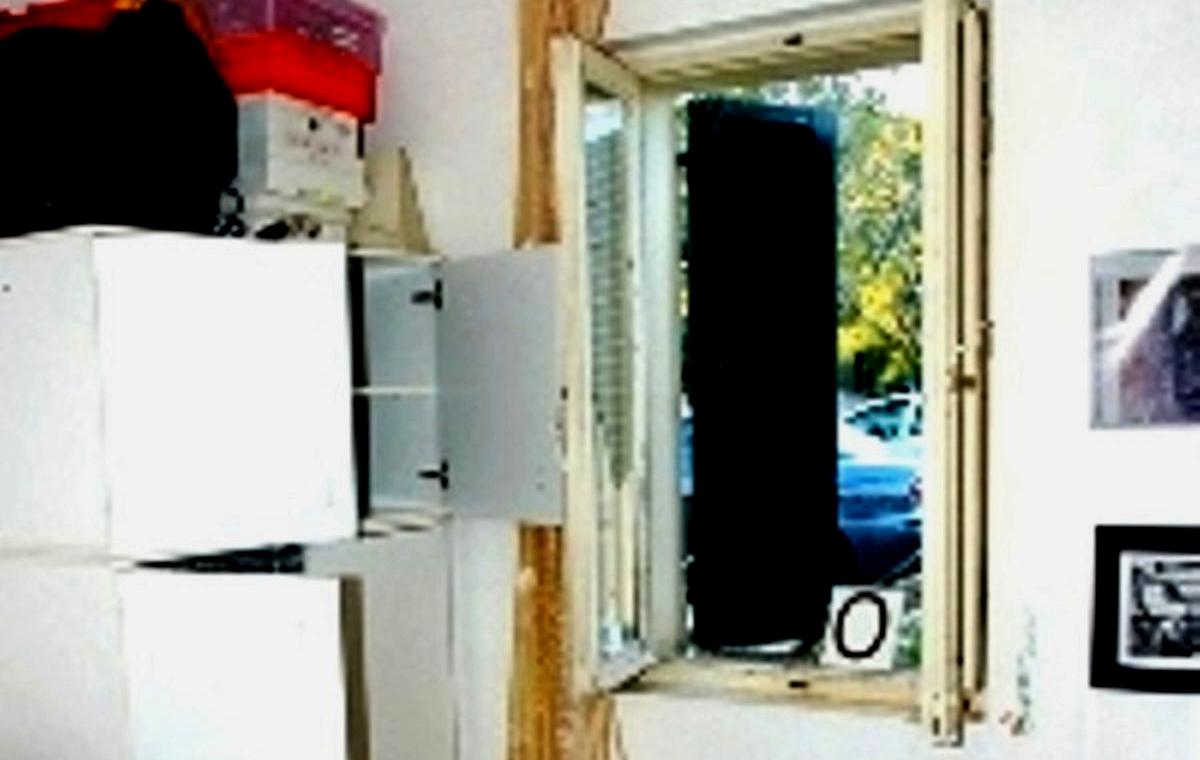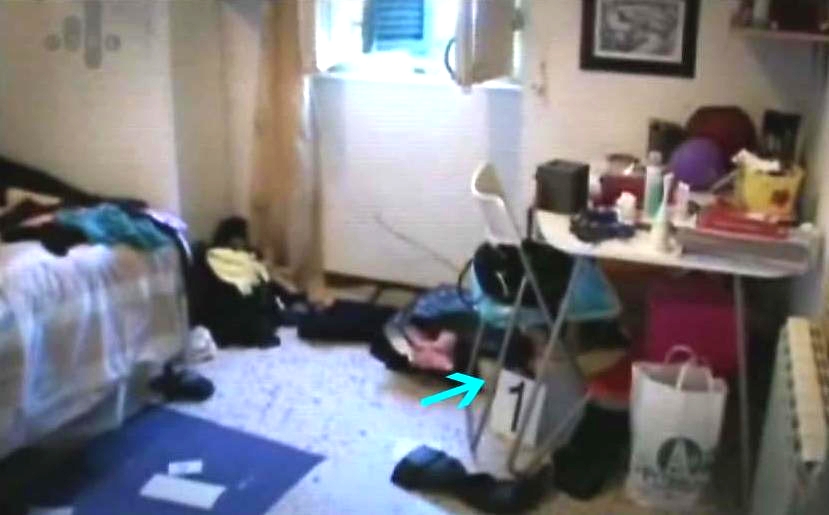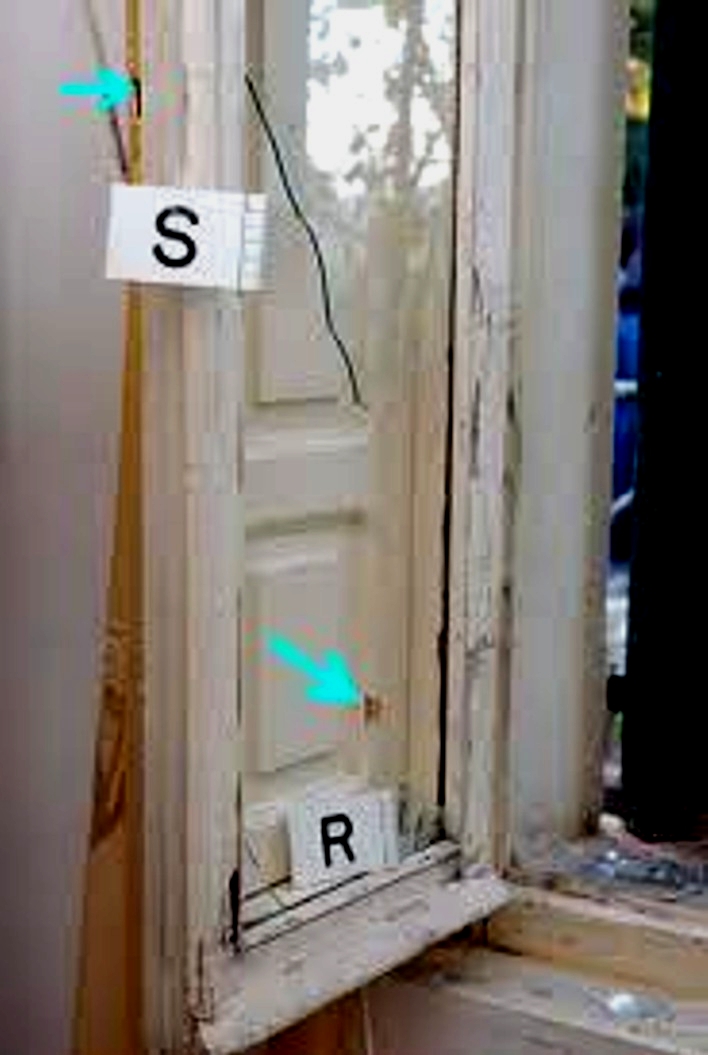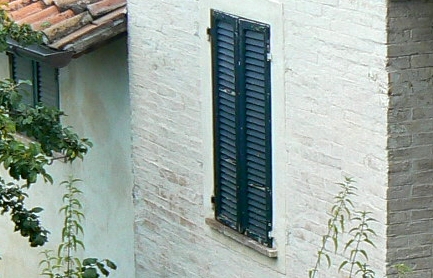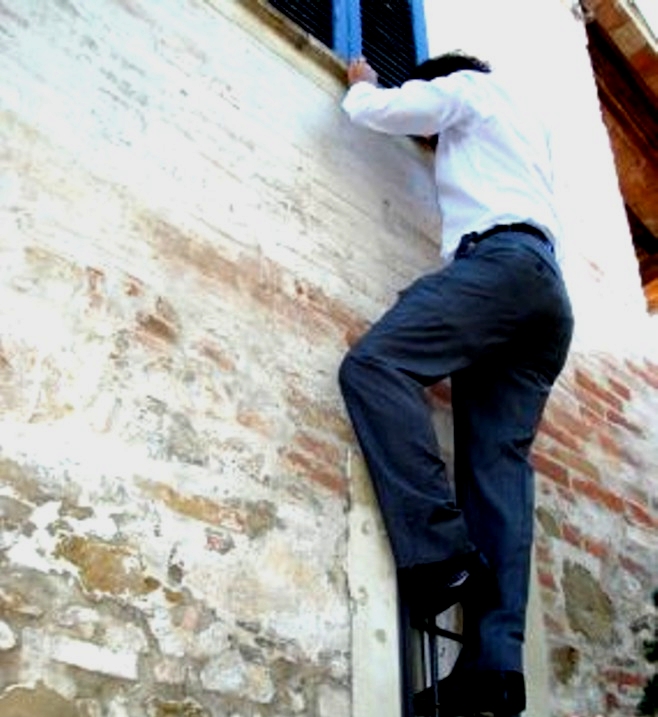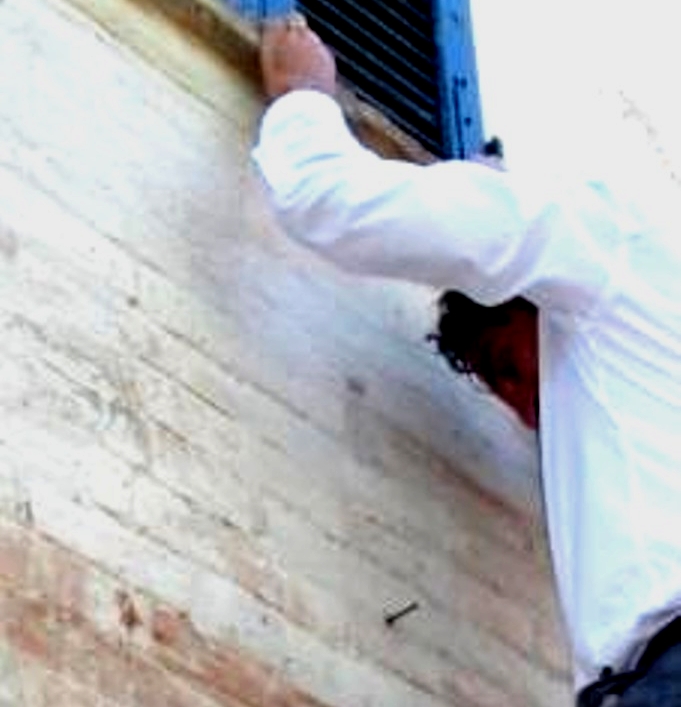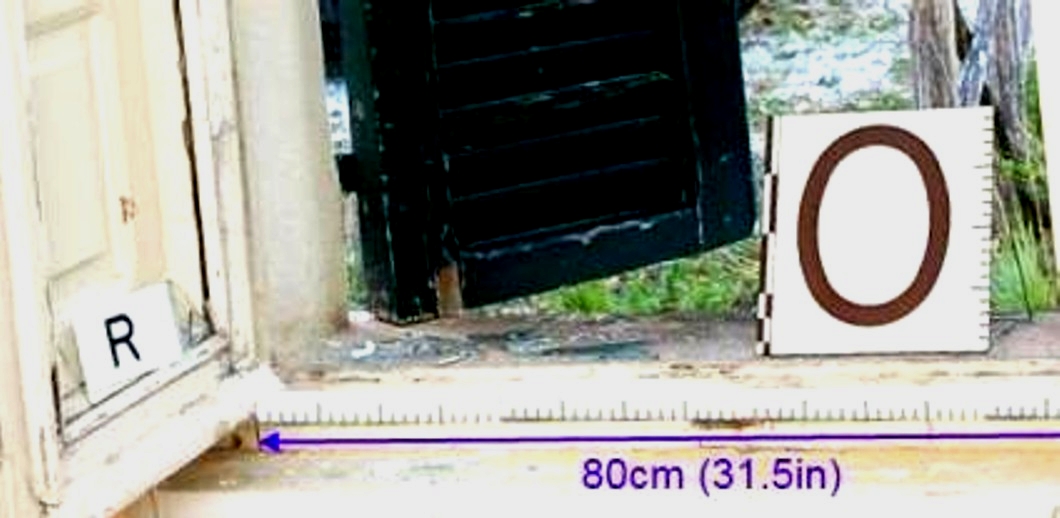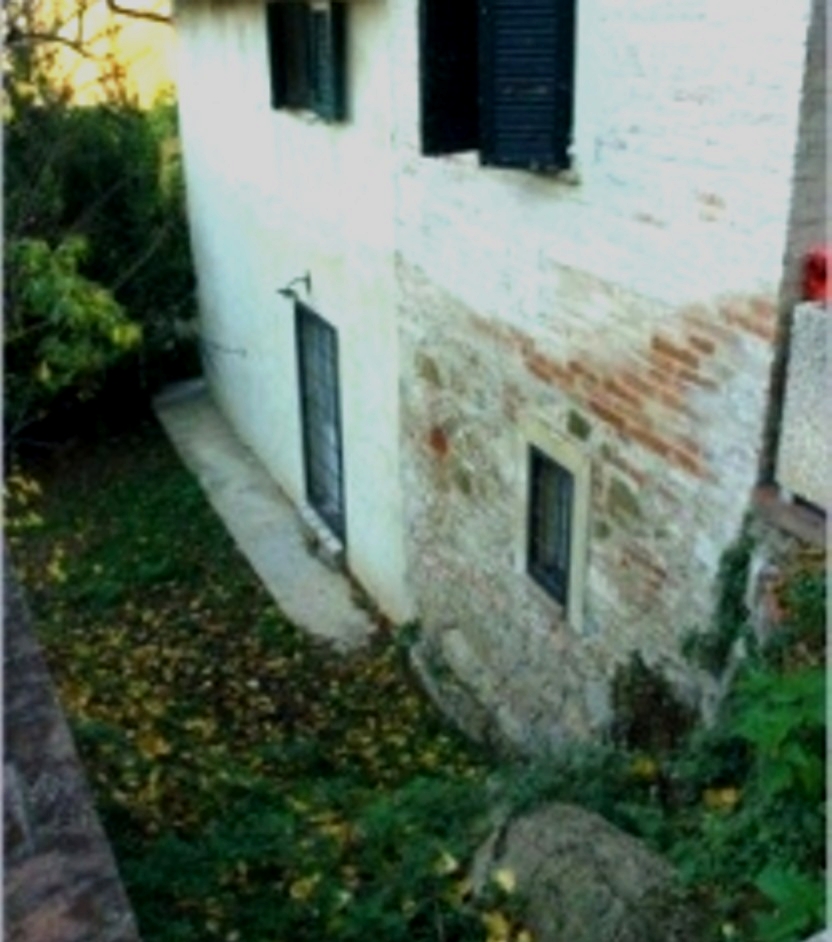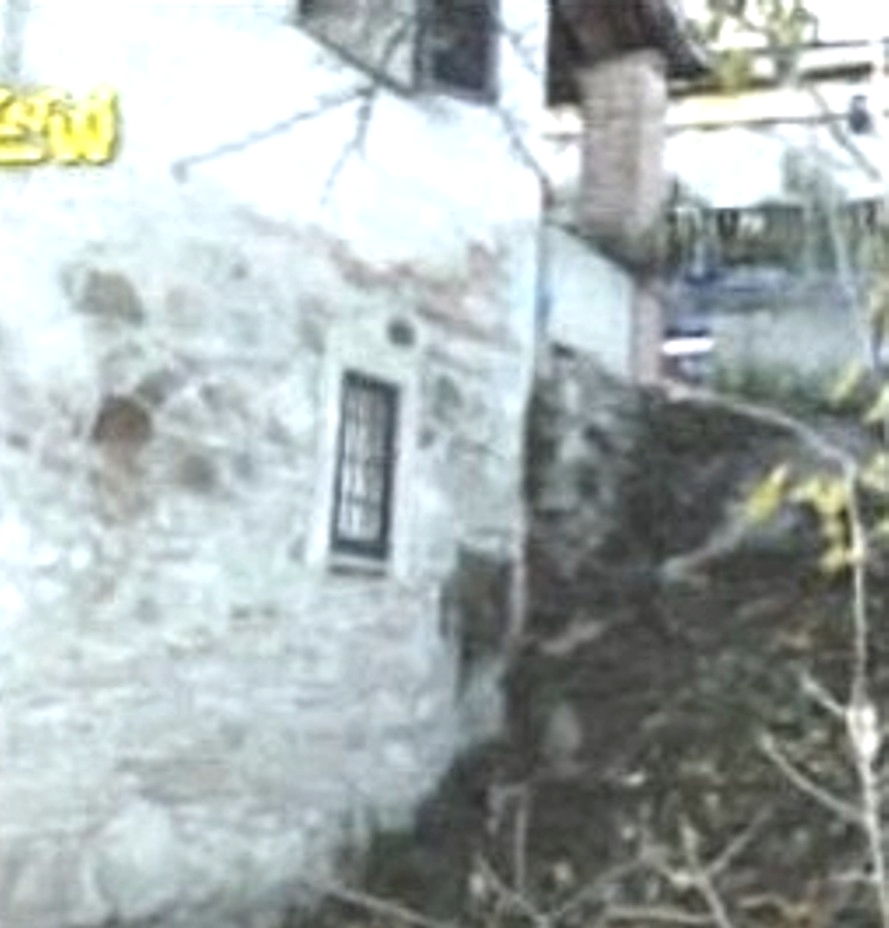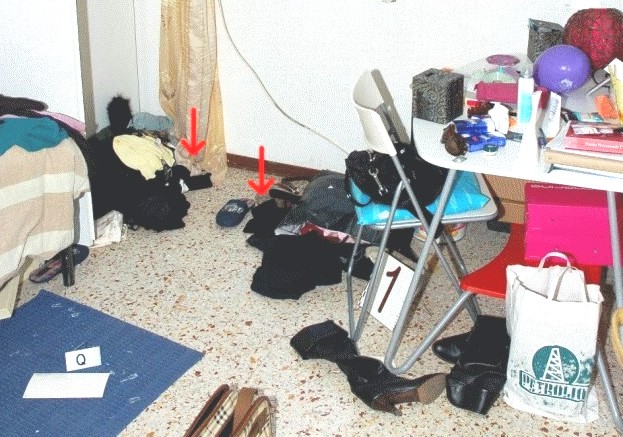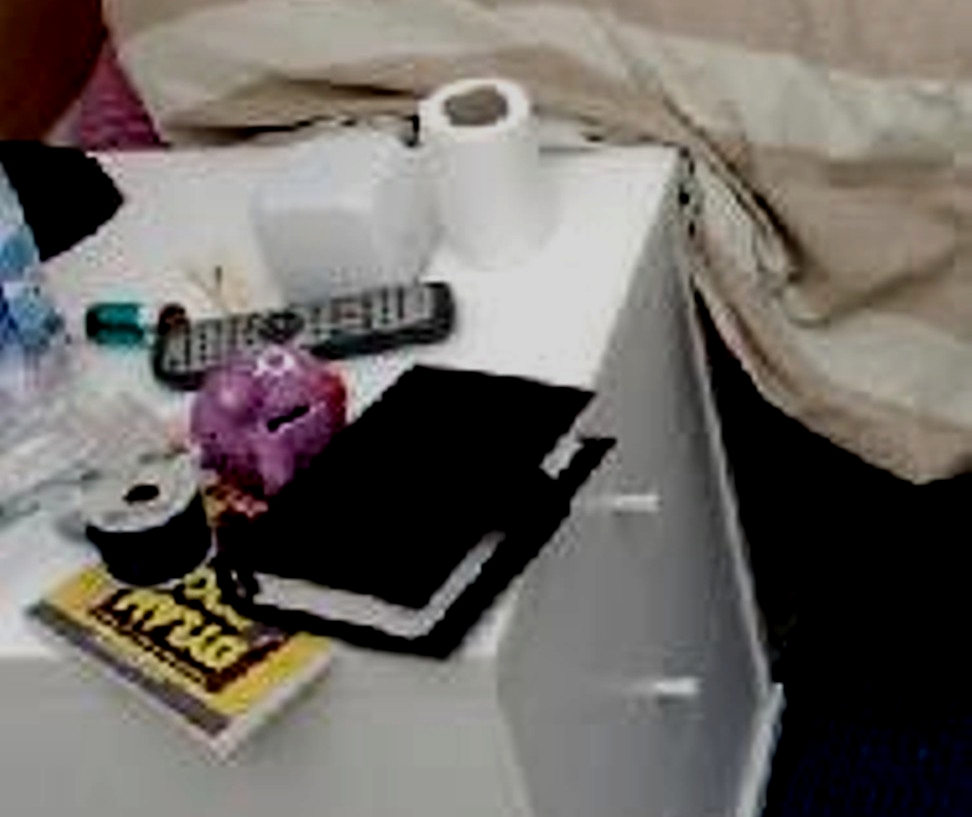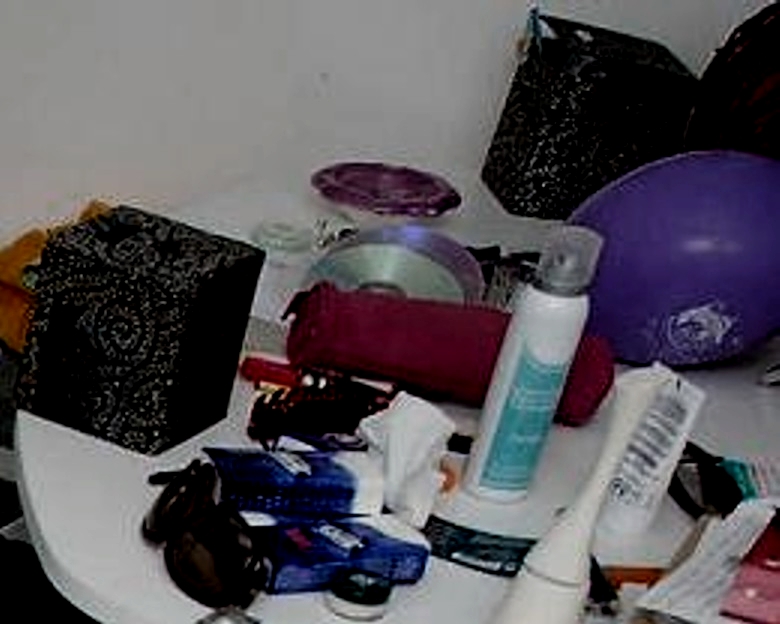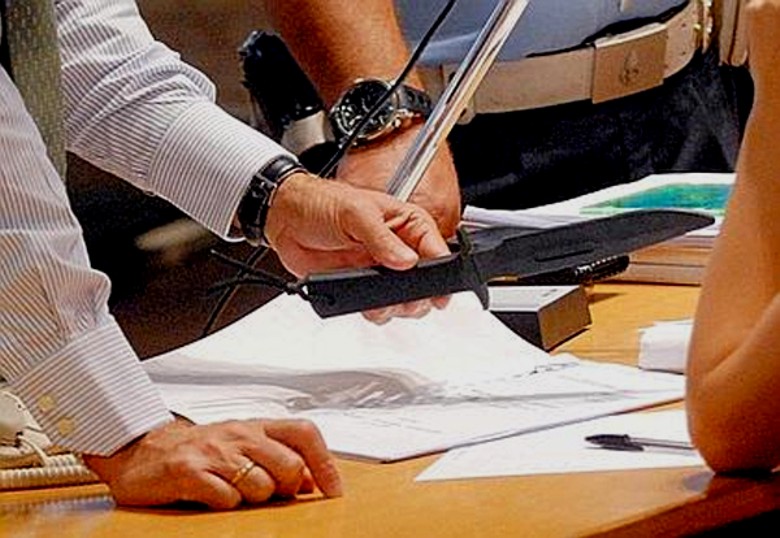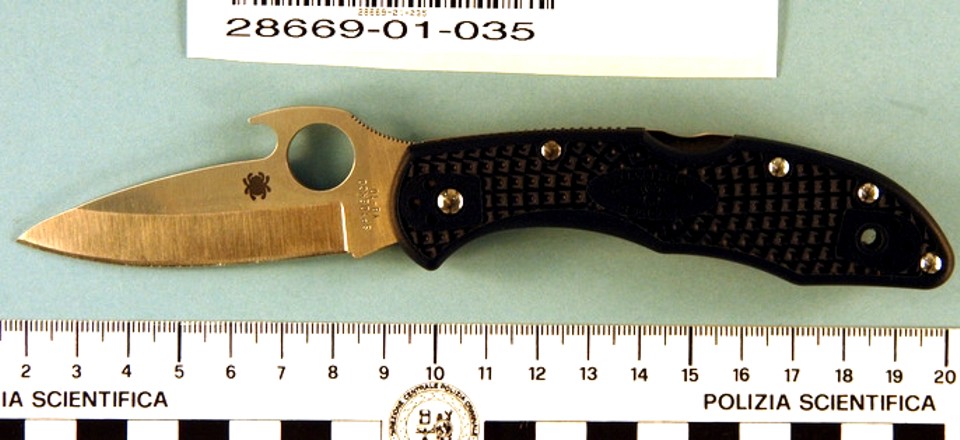
Category: Other physical
Monday, October 01, 2012
Testified That This CCTV Camera Probably Last Photographed Meredith Alive DRAFT
Posted by Peter Quennell
Put back at March 13 2009

Nick Pisa reporting from the trial on Sky News:
The Meredith Kercher murder trial has been shown CCTV footage of what the prosecution said was her arriving at home just hours before she died.
The grainy footage was taken from a car park camera overlooking the house where the British exchange student was found dead.
Other people were also in the images but police were not able to identify them, the Italian court heard. The jury was also shown CCTV images of officers arriving at the house after the murder.
It seems to have been similar to the CCTV footage in this video we posted where the camera is down at the intemediate level of the parking building.
This video will have been compressed for broadcast and the internet. The judges and jury would have been shown better-quality video directly from the camera.
Shots below show the entrance ramp to the upper level of the parking facility - the gate of the house is directly opposite - and the two CCTV cameras up there that record all arriving cars.
Meredith seems to have approached her house for the last time down the steps by the square in front of the School for Foreigners. Shown in the second-to-last shot below.
The bottom of the steps is a short distance behind our own camera in the three shots directly below.
Below: If you expand the image you can see the two CCTV cameras in this shot. It is the left camera that faces the gate of the house, and the famous intersection and dumpsters.
The trees in the background are in the park between the steps on this side of it (those that Meredith probably came down) and the School for Foreigners on the other side of it.
Below: Meredith seems to have approached her house for the last time down these steps by the square which is in front of the School for Foreigners about 100 meters off to the right.
Below: Meredith would have been about where the white car at back is to be caught on the CCTV camera maybe 20 meters to the right. The gate of her house is just beyond the car, and the steps down are off at hard right here and up behind.
Thursday, September 06, 2012
Dissecting The Hellmann Report #5: Their Obfuscation of Time of Death and Of Legal Blameworthiness
Posted by Cardiol MD
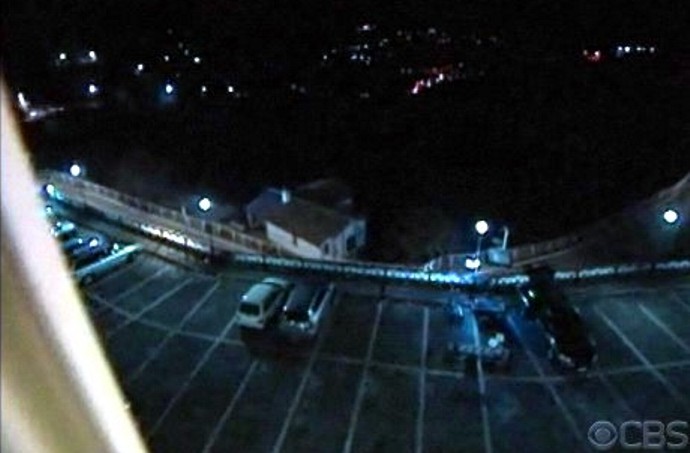
[View down on Meredith’s very well-lit house from the apartment above witness Madame Nara Capezzali’s]
Surreal Documentary Context
We have a very surreal situation on our hands. One perhaps without legal precedent. As previously in this series the legal document being analysed here is the Hellmann-Zanetti appeal report.
1) No main media in the US or UK have put that appeal report into English or done any serious legal analysis.
2) Nor have they translated the original trial report by Judge Massei or done any serious analysis of that.
3) Nor have they translated the tough and detailed appeal to the Supreme Court by the Chief Prosecutor of Umbria, Dr Galat, which was summarised and analysed by Yummi here. The meticulous PMF translation team should complete its translation soon.
4) None of the books on the case at present bring the legal developments up to the present or get into the details of the very tough Galati appeal.
Meanwhile the Knox and Sollecito teams are racing to get out their books in the US, with media interviews being scheduled, presumably in the hope that this vacuum of hard facts described above continues and they can fill it with their own kind of PR spin.
Of course none of this impinges on pending legal events in Italy where interested Italians have a radically different and more informed view. Except only to make sure everything is done correctly and firmly to the letter.
As usual, Knox and Sollecito are coming across as if they are on a different planet. Not one good lawyer seems to be explaining things to them, or even be of top of things for that matter.
On Hellmann-Zanetti on Time of Death
In this series, my previous posts explained the distortions and illogicalities in the Hellmann-Zanetti appeal report in the passages on the calunnia (false blaming of Patrick), witness Curatolo, and witness Quintavalle, and also the seeming prejudicial language used throughout.
Vital reading in advance of this post is Considering The Sad And Sensitive But Also Crucial Subject Of Meredith’s Time Of Death by my fellow lawyer James Raper.
He explained the difficulties of being precise about Meredith’s time of death, and he commented on Hellman-Zanetti as follows.
The first point to note here is that Hellmann misinterprets the first Court’s findings. He ignores the fact that the first Court did determine a TOD between 11pm and 11.30 pm as probable based on the pathology alone, and gave reasons for this.
None of the expert testimony is rehearsed, let alone re-evaluated by Hellmann. He proceeds merely to discredit the reliability of the witnesses as to the other elements such as the scream etc.
One recalls that Nara Capezzali says that she heard a scream sometime between 11 and 11.30 pm. That there was a broken down car and the breakdown driver came and went between perhaps 11 and 11.15 pm.
As mentioned earlier his hypothesizing about the other elements leads him to a TOD of not later than 10.13 pm although this time seems a very random one based on what he presents. He talks in this section about Guede’s statement that he arrived at the cottage at 9 pm.
One suspects that if Hellmann could have fixed the time of death at 9.15 pm or 9.30 pm then he would have done so as either time would be a get out of jail free card for Knox and Sollecito. He did not, but he got them out of jail nevertheless with his hypothesizing - here and elsewhere in his report.
So perhaps not surprisingly Dr Galati in his appeal to Cassation devotes nearly 3000 words to taking apart Hellmann-Zanetti’s arguments on Time of Death, under these 4 headings:
- Defect or manifest lack of logic in the sentencing report
- The intercepted chat [Guede on Skype]
- Meredith’s mobile phones
- The testimony of the three women [Capezzali, Monacchia, and Dramis]
Hellmann-Zanetti is politely but explicitly excoriated. In Dr Galati’s summarising of his own arguments he states this:
The claimed timing of the death of Meredith Kercher demonstrates a manifest illogicality in the reasoning, contains an unfounded assessment, and is manifestly in contrast with other court documentation of the case.
The internal and external inconsistencies of Hellmann’s statements on the topic constitute [yet another] violation of the Criminal Procedure Code.
Here are some examples of H/Z’s flood of reasons-to-doubt AK/RS’s guilt listed under Time of Death and not specifically mentioned in previous Dissections [my emphases]:
- Capezzalli “”¦was not able to pinpoint an exact time”¦”
- ”“¦the source of those [the scream and other] noises is not certain at all”¦.”
- ”“¦Monacchia’s testimony does not allow the time of the scream to be pinpointed at 11:30 PM, rather than at 11 PM or even before.”
- ”“¦she heard a loud scream of a woman, of which she could not however locate the source with certainty.”
- “The witness was not more accurate about the time, she could not connect it to objective data, but in her first testimony [verbale], when she presented herself to the investigators (the transcript of November 8, 2008 used for the indictment) she mentioned [aveva indicato] ʺ... at about 11 PMʺ. Monacchia’s statements therefore increase the ambiguity, as circumstantial evidence, of Capezzali’s statements instead of resolving it.”
- “Dramis, in fact, said that she went to sleep at around 11”11:30 PM, and that she woke up later (without being able, however, to specify how much later, while not excluding that it could have been 11:30 PM) due to the noise of quick footsteps, but she could not specify their direction, nor if they were produced by one or more persons, and she also noted that such events are not at all uncommon in this place”¦.. We find ourselves, therefore, confronting a piece of circumstantial evidence (scream and footsteps) [which is] extremely weak for its ambiguity, since it cannot even be placed with certainty in time.”
On Hellmann-Zanetti on Blameworthiness of Defendants.
As an example of a possible tendency under any legal system, Canadian law has already strayed-away on this subject, over a period of about nine years, and was only recently brought-back only by an Appellate ruling. So attempts to derail Italian law on this issue may be inevitable:
Canadian criminal law aims to maintain proportionality between the stigma and punishment attached to a conviction and the moral blameworthiness of an offender, in R v. Martineau (1990) the Supreme Court of Canada held that it is a principle of fundamental justice under sections 7 and 11(d) of the Canadian Charter of Rights and Freedoms that a conviction for murder requires proof beyond a reasonable doubt of a subjective foresight of death. In so doing, the court effectively declared sections 213 and 229(a)(i) and (ii) of the Criminal Code of Canada lacking in constitutional muster.[7]
Section 213(a) provided that a conviction for murder would lie for any killing that was “objectively foreseeable as a result of the abominable nature of the predicate crimes…inter alia…coupled with intentional infliction of bodily harm”.[7] . This largely equated with a Canadian form of felony murder, though it is technically closer to constructive murder in other jurisdictions.[8] .
Nevertheless s. 229(c), which provides for a form of constructive felony murder in situations where “an accused for an unlawful object did anything knowing that it was likely [on an objective standard] to cause someone’s death” is still operative, as confirmed in a 1999 appellate court decision”
Common-Law “˜Malice’ has historically required that an accused “knew, or ought to have known that the relevant act was wrong.”
In that “ought” lies an escape hatch.
What we believe as to the blameworthiness of these three offenders is obvious - they were committing a premeditated felony-sexual-assault using means which were foreseeably lethal, and actually were lethal.
Hellmann-Zanetti have already made clear what their blameworthiness opinion would be, although they have evaded reaching the issue by arguing reasonable doubt that two of the offenders were involved in Meredith’s murder, and deserve no blame for it whatsoever.
A legal issue which may eventually need to be addressed is whether a conviction for murder requires proof beyond a reasonable doubt using a subjective foreseeability of death standard or using an objective foreseeability of death standard.
If a subjective foresight of death were ever applied to a found-guilty AK & RS, they could plead that they just didn’t foresee that pricking Meredith’s neck with those knives could kill her; it was just a prank. For example “we were only hazing her; anyway, we were either mentally-ill or drugged or just plain dumb.”
If an objective foresight of death finding were ever applied to a found-guilty AK & RS, who were obviously committing a felonious assault using foreseeably lethal means, Meredith would get True Justice.
Tuesday, February 22, 2011
Open Questions: An Experienced Trial Lawyer Recommends How To Zero In On the Truth
Posted by SomeAlibi
Welcome
If you’ve come to this website because of the Lifetime movie of Meredith Kercher and Amanda Knox, then welcome.
Like all of us who come to this case, you have one key question: did they do it? The movie you’ve just watched is equivocal on that matter and perhaps didn’t help you at all.
On the internet, you will find people who are passionate in their defence of Amanda Knox and Raffaele Sollecito and you will find people who are passionate in their support of the prosecution.
My own arrival
Placing my own cards on the table here: as a twenty-plus year practising trial lawyer, I am firmly a part of that latter camp. But it wasn’t always that way.
It was information ““ evidence ““ that changed my views. What became very clear to me, early on, was that very few people in the English-speaking world are aware of anywhere near all of the evidence in this case.
I had thought I had grasped the core of the case, but I did not. The case is deep and complex and like many criminal cases, the complete facts behind it have been only sketchily reported in the media. The movie you may have just watched only skirts the real reasons the jury convicted.
The unanimous jury
I am sure that we all agree that no jury, in any murder case, given the awesome responsibility of adjudicating on (young) people’s lives for a multi-decade period of imprisonment, condemns people lightly.
It should be a matter of logic that the evidence presented against the accused must have been deep and satisfied the 6 lay jurors and 2 judges on the case for them to pronounce that huge judgement. That doesn’t mean that there couldn’t be the possibility of a mistrial, but clearly the evidence presented must have been substantial.
In this, we’ve already hit the first problem. Some supporters of Amanda Knox and Raffaele Sollecito will tell you there’s no evidence against them.
This is patently silly. No jury ever convicts people and sends them to prison for 24 plus years without being quite convinced of the case against them. Miscarriages of justice do happen, but the idea that there is “no evidence” can be summarily dismissed.
The only question is whether the evidence is sufficient, true and accurate.
The voluminous evidence
So is the evidence enough to convict beyond a reasonable doubt? The six lay jurors and two professional judges thought so, clearly. What you realise, when you come to the facts of the case, is that the evidence is based not around a single key event but on multiple points.
It can be astonishing to realise that the case is based not only on DNA evidence but also on cellphone evidence and computer records and further yet on multiple conflicting and contradicting versions of what happened that night from the mouths of the accused, not to mention falsely accusing an innocent man of responsibility for murder causing his incarceration.
The wealth of evidence is actually extremely unusual. It goes way beyond the quite similar Scott Peterson case.
The Massei Sentencing Report
What is absolutely new to the English speaking legal world is that the reasoning for the conviction can be read in an extremely detailed 440+ page report online. Bilingual posters at the Perugia Murder File Forum many of whom who are also key posters at TJMK translated the entire document into English over several months last year.
It was my privilege to play an extremely small part in that work. People from four different continents with backgrounds in forensic science, law, academia and a host of other disciplines participated.
You can read an effective executive summary by clicking on the Massei Report link at top here and reading the conclusions from page 388 onwards:
The Knox PR campaign
If you are new to this case, you will likely be shocked how much evidence there is against the convicted parties. Amanda Knox’s family have spent over $1m and involved a professional PR agency called Gogerty Marriot to suggest otherwise in the English-speaking media.
You might wonder why an innocent person needs a million dollar PR campaign on their part. Make yourself a coffee and read the conclusions of the judge’s report. It will take you about 15 minutes. Up until you read this report, almost everything you watch, hear and read is PR spin and is quite deliberately positioned to make you believe there is no case.
When you complete it, I believe you will have a very different take. That 15 minutes could change your ideas about everything you thought you knew about the murder of Meredith Kercher.
Now for a quick tour of the evidence.
Some of the points of evidence
Consider as you read it what is your own possible explanation for each of the following:
- the fact that the wound pattern and the reconstruction of the attack, each presented at trial in extensive closed-court sessions, showed this absolutely had to be a pack attack;
- the DNA of Raffaele Sollecito on Meredith’s bra-clasp in her locked bedroom;
- the almost-entire naked footprint of Raffaele on a bathmat that in *no way* fits that of the other male in this case - Rudy Guede;
- the fact that Raffaele’s own father blew their alibi that they were together in Raffaele’s flat at the time of the killing with indisputable telephone records;
- the DNA of Meredith Kercher on the knife in Raffaele’s flat which Raffaele himself sought to explain as having been from accidentally “pricking” Meredith’s hand in his written diary despite the fact Meredith had never been to his flat (confirmed by Amanda Knox);
- the correlation of where Meredith’s phones were found to the location of Raffaele Sollecito and Rudy Guedes’s flats;
- the computer records which show that no-one was at Raffaele’s computer during the time of the murder despite him claiming he was using that computer;
- Amanda’s DNA mixed with Meredith Kercher’s in five different places just feet from Meredith’s body;
- the utterly inexplicable computer records the morning after the murder starting at 5.32 am and including multiple file creations and interactions thereafter all during a time that Raffaele and Amanda insist they were asleep until 10.30am;
- the separate witnesses who testified on oath that Amanda and Raffaele were at the square 40 metres from the girls’ cottage on the evening of the murder and the fact that Amanda was seen at a convenience store at 7.45am the next morning, again while she said she was in bed;
- the accusation of a completely innocent man by Amanda Knox again and again when under no pressure which she insisted on putting in writing;
- the fact of Knox’s claim that she was aggressively interrogated for days, although she did not even have the status of a witness, and signed every page of every typed record of her mild, mundane and quite limited questionings;
- the fact that during Knox’s very unconvincing performance on the witness stand in July 2009 she admitted she was treated well and was not abused;
- the fact that when Amanda Knox rang Meredith’s mobile telephones, ostensibly to check on the “missing” Meredith, she did so for just three seconds - registering the call but making no effort to allow the phone to be answered in the real world
- the knife-fetish of Raffaele Sollecito, and his formal disciplinary punishment for watching animal porn at his university so far from the wholesome image portrayed;
- the fact that claimed multi-year kick-boxer Raffaele apparently couldn’t break down a flimsy door to Meredith’s room when he and Amanda were at the flat the morning after the murder but the first people in the flat with the police who weren’t martial artists could;
- the extensive hard drug use of Sollecito as told on by Amanda Knox;
- the fact that Amanda knew details of the body and the wounds despite not being in line of sight of the body when it was discovered;
- the lies of Knox on the witness stand in July 2009 about how their drug intake that night (“one joint”) is totally contradicted by Sollecito’s own contemporaneous diary;
- the fact that after a late evening’s questioning, Knox wrote a 2,900 word email home which painstakingly details what she said happened that evening and the morning after that looks *highly* like someone committing to memory, at 3.30 in the morning, an extensive alibi;
- the fact that both Amanda and Raffaele both said they would give up smoking dope for life in their prison diaries despite having apparently nothing to regret;
- the fact that when Rudy Guede was arrested, Raffaele Sollecito didn’t celebrate the “true” perpetrator being arrested (which surely would have seen him released) but worried in his diary that a man whom he said he didn’t know would “make up strange things” about him despite him just being one person in a city of over 160,000 people;
- the fact that both an occupant of the cottage and the police instantly recognised the cottage had not been burgled but had been the subject of a staged break-in where glass was *on top* of apparently disturbed clothes;
- the fact that Knox and Sollecito have feuded quite publicly ever since November 2007 and have shown far more anger toward one another than either has ever shown toward Guede;
- the fact that Knox and Sollecito both suggested each other might have committed the crime and Sollecito TO THIS DATE does not agree Knox stayed in his flat all the night in question;
- the fact of the bizarre behaviour of both of them for days after the crime;
- the fact that cellphone records show Knox did not stay in Sollecito’s flat but had left the flat at a time which is completely coincidental with Guede’s corroborated presence near the girl’s flat earlier in the evening;
- the fact that Amanda Knox’s table lamp was found in the locked room of Meredith Kercher in a position that suggested it had been used to examine for fine details of the murder scene in a clean up;
- the unbelievable series of changing stories made up by the defendants after their versions became challenged;
- Knox’s inexplicable reaction to being shown the knife drawer at the girl’s cottage where she ended up physically shaking and hitting her head despite being joyful earlier at the police station.
In conclusion
This list is not exhaustive. It goes”¦ on”¦ and on”¦ and on”¦ And yet, those supporting Knox will tell you that’s all made up, all coincidental.
Really? Does the weight of all that evidence sound made up to you?
If so, it must be the most over-rigged criminal case in the history of crime. Unlikely beyond all and any reasonable doubt.
The judge’s report explains why the jury found the defendants guilty. I truly expect you will be astonished at the amount of evidence if all you’ve done is watched a film or read a few press reports.
For any questions thereafter, please join us and post them on truejustice.org or perugiamuderfile.org . You’ll find here a host of good people who are all working on a totally volunteer basis in memory of the only victim of this crime.
Meredith Susanna Cara Kercher. RIP.
Tuesday, February 01, 2011
Explaining The Massei Report: A Visual Guide To The Faked Break-In Via Filomena’s Window
Posted by pat az
1. Post Overview
Cross-posted from my own website on Meredith’s case at the kind invitation of TJMK.
The Massei Report on the trial and sentencing of Amanda Knox and Raffaele Sollecito looks into whether or not a break-in is supported by the evidence available in the room with the broken window.
It concludes that the broken window and room in disarray - Filomena’s bedroom - are an “artificial representation”, ie. that the break-in was faked. After seven pages of review of the evidence, the Massei Report states:
“the situation of disorder in Romanelli’s room and the breaking of the window pane constitute an artificial representation created in order to orient the investigations towards a person who, not having the key to the front door, was supposed to have entered through the previously broken window and then effected the violent acts on Meredith which caused her death.
What follows is a look at the comments in the Massei report compared with crime scene and other photos. All quotes are from the English translation prepared by unpaid volunteers at PerugiaMurderFile.org. The section on the scenes in the bedroom begins on page 47 and continues to page 55. Some sentences in the paragraphs below have been omitted for brevity, and can be read in full in the original.
2. Knox Finds The Scene
Then (Amanda) went into another room and noticed that the window had been broken and that there was glass inside. She told these things to her and the other girls present. Then she related that she had gone back to Raffaele’s house and had rung Filomena.
I)n one of the telephone calls to Romanelli, Amanda spoke of that smashed window and of the possibility that someone could have entered the house through the broken place; she said this also in the telephone call to 112 and in the first declarations to the Postal Police.
Also in the e-mail of November 4, 2007, sent by Amanda to 25 people in the US, she hypothesises that a burglar could have entered the house and says she looked around to see if anything was missing.
Filomena Romanelli, disturbed by this phone call, had rung Amanda back without receiving a reply and when, a little later, she had succeeded in speaking to Amanda, Amanda had told her that in her room (i.e., in Ms. Romanelli’s room) the windowpane was broken, everything was in a mess, and that she should come back home.
Filomena Romanelli had ascertained from a quick check of her room, even though (it was) in a complete mess with the windowpane broken, that nothing was missing.
It must be held that when Filomena Romanelli left the house in via della Pergola, she had pulled the [interior] shutters towards the interior of her room, although she did not think that she had actually closed them; furthermore, because they were old and the wood had swelled a bit, they rubbed on the windowsill; to pull them towards the room it was necessary to use some force (“they rubbed on the windowsill”); but in this way, once they had been pulled in, as Romanelli remembered doing, they remained well closed by the pressure of the swelled wood against the windowsill.
It cannot be assumed - as the Defence Consultant did - that the [interior] shutters were left completely open, since this contradicts the declarations of Romanelli, which appear to be detailed and entirely likely, considering that she was actually leaving for the holiday and had some things of value in her room; already she did not feel quite safe because window-frames were in wood without any grille.
Also, the circumstance of the [interior] shutters being wide open does not correspond to their position when they were found and described by witnesses on November 2, and photographed (cf. photo 11 already mentioned).
Now, for a rock to have been able to break the glass of the window without shattering the outside shutters, it would have been necessary to remove the obstacle of the shutters by opening them up.
Consequently, since the shutters had been pulled together and their rubbing put pressure on the windowsill on which they rested, it would have first been necessary to effect an operation with the specific goal of completely opening these shutters.
The failure to find any instrument suitable for making such an opening (one cannot even see what type of instrument could be used to this end) leads one to assume that the wall would have to have been scaled a first time in order to effect the complete opening of the shutters, in order to enable the burglar to aim at the window and smash it by throwing a large stone - the one found in Romanelli’s room.
He would then have to have returned underneath Romanelli’s window for the second climb, and through the broken glass, open the window (balanced on his knees or feet on the outside part of the windowsill), otherwise he would not have been able to pass his arm through the hole in the glass made by the stone) and reach up to the latch that fastened the window casements, necessarily latched since otherwise, if the casements had not been latched, it would not have been necessary to throw a rock at all, but just to open the shutters and climb inside.
The “climber” would also need to rely on the fact that the [interior] shutters were not actually latched, and also that the “scuri” ]blackout blind] had not been fastened to the window-frame to which the broken pane was attached; otherwise it would not have been possible to open them from the outside; nor would it have been possible, even breaking the glass, to make a hole giving access to the house, since if these inner panels had been closed, they would have continued to provide an adequate obstacle to the possibility of opening the window, in spite of the broken pane.
This scenario appears totally unlikely, given the effort involved (going twice underneath the window, going up to throw the stone, scaling the wall twice) and taking into account the uncertainty of success (having to count on the two favourable circumstances indicated above), with a repetition of movements and behaviours, all of which could easily be seen by anyone who happened to be passing by on the street or actually coming into the house.
But beyond these considerations, there are other elements which tend to exclude the possibility that a burglar could have entered the house through the window of Romanelli’s room.The double climb necessary to attain the height of three and a half metres would have left some kind of trace or imprint on the wall, especially on the points on the wall that the “climber” would have used to support his feet, all the more as both the witnesses Romanelli and Marco Zaroli gave statements indicating that the earth, on that early November evening, must have been very wet (..6) (p50)
In fact, there are no visible signs on the wall, and furthermore, it can be observed that the nail ““ this was noted by this Court of Assizes during the inspection ““ remained where it was: it seems very unlikely that the climber, given the position of that nail and its characteristics, visible in the photo 11, did not somehow “encounter” that nail and force it, inadvertently or by using it as a foothold, causing it to fall or at least bend it. (p50)
The next fact to consider is that the pieces of glass from the broken pane were distributed in a homogeneous manner on the inside and outside parts of the windowsill, without any displacement being noted or any piece of glass being found on the ground underneath the window.
This circumstance, as confirmed also by the consultant Pasquali, tends to exclude the possibility that the rock was thrown from outside the house to create access to the house through the window after the breaking of the pane. The climber, in leaning his hands and then his feet or knees on the windowsill, would have caused at least some piece of glass to fall, or at least would have been obliged to shift some pieces of glass in order to avoid being wounded by them.
Instead, no piece of glass was found under the window, and no sign of any wound was seen on the pieces of glass found in Romanelli’s room. It can moreover be observed that the presence of many pieces of glass on the outside part of the windowsill increases the probability of finding some small pieces of glass on the ground underneath, since there seems to be no reason that so many pieces of glass would all stop just at the edge of the windowsill without any of them flying beyond the edge and falling down to the garden below. (p51 & 52)
On this subject it is also useful to recall that at the hearing of April 23, 2009, the witness Gioia Brocci mentioned above declared that she had observed the exterior of the house, paying particular attention to the wall underneath the window with the broken pane, the window of the room then occupied by Filomena Romanelli.
She said: “We observed both the wall”¦underneath the window and all of the vegetation underneath the window, and we noted that there were no traces on the wall, no traces of earth, of grass, nothing, no streaks, nothing at all, and none [39] of the vegetation underneath the window appeared to have been trampled; nothing” (p. 142 declarations of Gioia Brocci). (51)
This situation, like all the other glaring inconsistencies, is adequately and satisfactorily explained if one supposes that the rock was thrown from the inside of the room, with the two shutters pulled inwards so that they blocked the pieces of glass from falling to the ground below. Once the glass had been broken from inside, the rock was set down at some place in the room, and the shutters were pushed towards the outside, being thus opened from within the room. (p51)
But the fact that all this was in fact just a simulation, a staging, can be deduced from further circumstances. From the photos taken by the personnel of the Questura (photos 47 to 54 and 65 to 66) one can perceive an activity which appears to have been performed with the goal of creating a situation of obvious disorder in Romanelli’s room, but does not appear to be the result of actual ransacking, true searching for the kind of valuable objects that might tempt a burglar.
The drawers of the little dresser next to the bed were not even opened (photo 51 and declarations of Battistelli who noted that Romanelli was the one who opened the drawers, having found them closed and with no sign of having been rifled: see p. 66 of Battistelli’s declarations, hearing of Feb. 6, 2009).
The objects on the shelves in photo 52 appear not to have been touched at all; piles of clothes seem to have been thrown down from the closet (photo 54) but it does not seem that there was any serious search in the closet, in which some clothes and some boxes remained in place without showing any signs of an actual search for valuable items that might have been there (photo 54).
It does not appear that the boxes on the table were opened (photo 65) in a search for valuable items. And indeed, no valuable item (cf. declarations of Romanelli) was taken, or even set aside to be taken, by the ““ at this point we can say phantom ““ burglar.
What has been explained up to now thus leads to the assertion that the situation of disorder in Romanelli’s room and the breaking of the window pane constitute an artificial representation created in order to orient the investigations towards a person who, not having the key to the front door, was supposed to have entered through the previously broken window and then effected the violent acts on Meredith which caused her death.
Footnotes
(...1) The Massei Report in English is readable and downloadable via the link at the top of this page.
(..2) The consultant for the defence actually assumed that this had been done; in his exhibit, he assumed that the shutters were not present in front of the window
(..3): “if the shutters were closed, he could not have passed through, that is obvious”, cf. declarations of the consultant for the defence, Sergeant Francesco Pasquali, p. 22 hearing July 3, 2009.
(..4): (the window in Romanelli’s room is located at a height of more than three and a half metres from the ground underneath, cf. photo 11 from the relevant dossier)
(..5):,which are the wooden panels [scuri=non-louvered shutters in interior of room] that usually constitute the outer side (or the inner, depending on the point of view) of the window [attached to the outer edge of the inner side of the window-frame]
Tuesday, May 25, 2010
The Chilling Killing Propensities Of Sollecito’s Various Knives
Posted by SomeAlibi
The few rather puerile websites trying to make the case that Knox and Sollecito were framed all have this one thing in common.
They are all of them a mile or more wide on the facts of the evidence - but only a millimeter or so deep.
Time and again on some point of evidence TJMK and PMF have gone far, far deeper than they have - and from then on, on that particular point, deafening silence is quite usual. Here is one very good example, on TJMK, highly incriminating in itself, and highly suggestive of when and how Edda Mellas first realised her daughter was guilty.
On that point of hard evidence, almost enough to incriminate Amanda all by itself, there has never been any real comeback. The PR campaign’s Wizard of Oz moves on.
Now we advance another in-depth analysis. This time it focuses on the really deadly nature of Sollecito’s various knives, and we’ll await the comeback if any with interest.
In effect, the deniers’ argument made is that Sollecito is not a collector or an aficionado, just a young man who might need to cut an apple with a pocket-knife. And he’s certainly not a hardcore knife collector, collecting fantasy-wish-list knives.
Carrying a pocket-knife above a certain size in public is illegal in Italy. But ignoring that technicality for a minute, let’s examine the knives of Raffaele Sollecito which were impounded during his arrest. Three knives, moving up in degrees of interest, not counting the very large knife prosecution witnesses identified as the murder weapon.
Knife Three
Take a look at the image up the top here. This knife actually hung above Sollecito’s bed.
It is a replica combat knife. The heavy t-bar protection is designed to protect the hand of the knife-user from slipping onto the blade when being used to stab another person, as well as to protect the user against another blade.
Blood grooves exist for only one purpose - as they imply, they are there for when one stabs someone deeply with the knife: they allow the blood to run out down the grooves. This breaks the seal and suction of the enclosing wound around the blade which makes the knife far easier to withdraw
That knife is specifically designed for stabbing people as well as cutting sentries’ throats etc. The female arm in the picture is Amanda’s by the way (you can find the zoomed-out version showing all of Amanda in the PMF gallery), as it was taken when she was being shown the knife in court.
She must have recognized it, of course, since it was from Raffaele’s bedroom, and would have been a rather noticeable discussion piece within view whenever Knox was in the room or laying on the bed.
Many teenagers and young adults put the objects of their highest interest and infatuation, from bands to film-stars, on their walls. Raffaele chose to put a knife designed for killing people on his wall.
It would be a lurking and incongruous presence on a small student-sized bedroom wall in the minds of the vast majority of people. The question of Raffaele’s degree of attraction to knives such that he actively chose to mount a replica combat knife on his bedroom wall doesn’t appear to need much further discussion.
And yet, it’s actually only less than a third of the equation as it was only a replica. Now let’s turn to two real knives - his so-proclaimed pocket knives - which Raffaele confirmed in his own words that he carried on him every day for years, and which tell a more subtle and deeper story.
First, consider what is the meaning of a pocket knife to you.
The phrase “˜pocket knife’ has been translated from the Italian from the transcripts / press coverage. For many, including myself, this will have conjured a mental image of a Swiss Army type knife or a simple blade and indeed this is the prevalent definition of a conventional pocket knife.
Let’s actually have a look at Raffaele’s “pocket knives” courtesy of pictures posted by poster Jools on PMF. These knives were impounded, one from the apartment and one, unbelievably, from Raffaele’s person at the Questura.
In the case of the latter, even Raffaele saw this as a devastating “own-goal” as we can read from his diary entry of 7 November 2007; “I’m not even able to offer guilt, given my deep fu**ing stupidity for the fact that I smoke cannabis I even forget what I have eaten and also for that I carry behind a knife to nock the tables and the trees and I carry it so often that I brought it also to the police headquarters.”
Knife Two
This is a 2.9 inch blade drop point, near spear point knife. At first glance (apart from the mark on the clip which should be ignored and was benign), the deniers camp might say “Well, look at it - it’s just a pocket knife even if it looks a bit sharp and so on ““ look, it’s even got a cute clip for the pocket, like on a pen.”
Let’s start there. The clip is actually a reversible one ““ it can be taken off and re-screwed to the knife to the user’s side / orientation of preference. This is already a proper knife rather than a cheap shop pick-up.
More obviously, the half-serrated edge to the blade for cutting is an active design (and purchase) feature.
Third, the “˜grind’ on the top the blade shows an aesthetic sensibility to the design but also serves a functional purpose for a cutting or stabbing use in terms of reducing friction.
Fourth, the serrations or (quite aggressive) “˜jimping’ on the top of the handle, just behind the blade are there to provide thumb grip.
Quite a lot of design features on this knife for a casual “pocket knife” one might think.
Which leaves us with the odd bar code thing at the top edge of the blade and the indistinct logo on the blade. Let’s see what that logo is with a little enhancing;
“˜Brian Tighe Design’. Brian Tighe?? Google sets us straight on who he is.
“You’d need a calculator to count the number of custom knife-makers who have jumped into the tactical fray over the past five years. You can tally the cream of the crop on two hands, being sure to earmark one of those digits for knifemaker Brian Tighe. In a matter of just a couple of years Tighe (pronounced “Tie”) has risen from the rank and file of edged weapons artisans to the rarefied air of the top 10 elite.”
A look at Tighe’s site shows that his own company’s knives sell for 500 dollars and up. He is a globally feted knife designer whose wait list for his knives was as high as seven years at one point.
So the design of the knife here is actually that of a noted master knife maker. Almost something one might collect, one might say. As loaded as Papa Doc Sollecito is, did Raffaele really spend over 500 dollars on such a knife?
Well no, actually, he didnt need to. This is a Columbia River Knife & Tool produced 811x series knife bearing Brian Tighe’s name. CRKT are a dedicated knife company who specialise in working with the world’s leading knife designers and producing the knives for a bigger market but still as proper aficionado pieces.
At this level of knife, there are extensive magazine, web and “˜user’ reviews. Knives like this are tested for resilience and sharpness including things like edge-on paper-cut tests where paper is cut through just like a razor from the side of a piece of paper held by one hand.
Such a knife is able to catch the edge of the paper and then slice straight through the width of the paper side-on without any tension in the paper. That’s what a knife like this is capable of. A “pocket knife” to me sounds like something picked up for 10 or 20 euro. The current model that replaced Raffaele’s now out-of-series model sells for about $80 at retail. Here’s the actual 2004 model that Raffaele had i.e. the same as the one above;
Worth looking at that for a second or two… Oh the bar code? It’s not a bar code, it a rectangular thumb stud you flick the knife open with. When you do, the knife goes to a locked position unlike many “pocket-knives”. In English speaking knife circles, these knives are not generally referred to as pocket-knives but are called “Tactical Knives” which are a cross-over of usage knives for outdoors / cutting etc but also for personal “protection”.
So, in addition to the wall-mounted replica combat knife, one of Raffaele’s daily carries (see diary / testimony) was a designer thumb-flicked locking tactical knife with jimping, top blade grind, switchable clip and a razor sharp edge costing about 80 bucks. That you can only carry in your pocket. Illegally. Some apple-cutter.
Let’s take a look now at the most worrying knife of all…
Knife One
At first glimpse, this “pocket knife” looks quite martial arts like, given the hole and the weird top edge of the blade and the spider logo.
The logo marks this as a Spyderco knife ““ a large premium knife manufacturer of tactical and many other types of knives. This particular model is a Delica4 Emerson Opener retailing for about $109.95rrp. Of particular note about this knife is the hole and the top edge. The hole, a Spyderco feature, allows a thumb to flick the blade open very quickly. This knife is about speed.
But actually the thumb hole is not the real speed feature ““ that is reserved for the top edge curl.
This is a truly specialist feature known as an Emerson Opener or “wave”. The idea is that the curl in metal catches on the edge of a pocket edge on drawing the knife and opens it immediately (see videos below).
This is a speciality feature licensed from Emerson knives ““ Emerson being another feted “˜name’ knife designer. The wave is only present on two of Spyderco’s 330 knives listed on their website ““ the Delica and the ¾ inch larger sister knife the Endura (“the best self defence knife in the world” according to one enthusiastic teenager on youtube). That’s how specialist it is.
The job of the wave feature is to provide the fastest opening knife in the world bar none ““ faster than a flick or spring knife in fact. This video (many similar to be found) gives a rather disturbing insight into what the real attraction of owning this knife is to a hardcore knife knut like Raffaele; (remember when you watch this for the first time that the knife is closed inside that pocket and also enable the sound on the embedded player below by clicking off the mute)
If I thought my son had a penknife, but then actually saw him with this, we would be having a very long chat..
“Enough!” the deniers say?! “You’ve still got it in for Raffaele haven’t you?” they say?! Despite the replica combat knife on the bedroom wall, the designer Brian Tighe Design CRKT drop-point and the Spyderco Delica4 with wave design)? “You’ve used prejudicial phrases like “hardcore knife knut” haven’t you?” they say?!
Sorry, but don’t look at me. They’re not my words.
They’re the words of Spyderco itself on its own webpage. See here and below.
Raffaele was out to impress Amanda and by his own admission both obsessive about her and a hardcore stoner. He also thought knives - proper knives with exclusive features by name knife designers not pocket knives were fascinating.
As with all of this case and any case, you REALLY need to look at the detailed evidence.
The overwhelming prevalence of skin-deep level of analysis / downplaying of this case by much of the deniers camp will lend and always has lent itself to people dismissing serious evidence as inconsequential based on their lack of understanding of what actually is in question.
The “mere pocket-knife” impression of Raffaele’s interest in knives is a clear case in hand. Raffaele’s father testified in court that his son carried a pen-knife. Some pen-knives or pocket-knives these really were…
As always with this case, when you take the time to look at the real detail, the reality you find is something far more disturbing…..
Saturday, September 19, 2009
Trial: Defense Returns To Weapon While Most Of Prosecution Case Still Not Contended
Posted by Peter Quennell

Journalists were asked to leave the courtroom today during a weak repeat of the contention that the large knife was not THE weapon.
But the prosecution had already indicated months ago that they believed at least one other knife was involved.
Click above for Nick Squires on one report from the press room outside the court.
The black-handled knife, with a 6.5 inch long stainless steel blade, was shown for the first time to the court in Perugia where the 22-year-old American student and her Italian ex-boyfriend, Raffaele Sollecito, 26, are accused of sexual assault and murder.
A court official brought out the knife in a shallow white cardboard box marked “Evidence ““ handle with care” and showed it to the judge and eight jurors.
Miss Knox, of Seattle, who was wearing blue jeans and a red sweatshirt with a Beatles design, appeared impassive as the purported murder weapon was shown during the testimony of a forensic expert, Prof Giancarlo Umani-Ronchi.
She looked away when police photographs of Miss Kercher’s bloodied body were projected onto a giant screen in the courtroom.
Mr Sollecito, in a white jacket and rimless glasses, bit his fingernails as the alleged use of the knife in the killing was discussed by experts and lawyers.
A forensic consultant, Mariano Cingolani, said that of the three wounds on Miss Kercher’s neck, at least one was not compatible with the size and dimensions of the knife.
“Many other knives in general are more compatible with that kind of wound,” said Prof Cingolani. The wound was too narrow to match the knife, he said.
He added, however, that no firm conclusion could be drawn without knowing the exact angle of Miss Kercher’s neck, or the elasticity of her muscle tissue…
The former lovers, who could be sentenced to life in prison if found guilty, looked tired and nervous.
So there is a question mark over the role of the large knife but again, nothing definitive. No defense attempt to prove that no other knife was used.
Meanwhile, whole other universes of very damning prosecution evidence against Sollecito and Knox remain uncontested, like a herd of elephants in the room.
For example the very damning mobile calls. And also the highly confused alibis.
Saturday, July 18, 2009
Trial: Defense Witnesses Testify On Cannabis Effects And Meredith’s Mobile Phone
Posted by Peter Quennell

Click above for Nick Pisa’s Sky News report.
1) On the effects the claimed smoking of a joint would have had
A toxicologist called by lawyers defending Amanda Knox and Raffaele Sollecito in the Meredith Kercher murder trial has told the court that smoking cannabis does not make you aggressive.
Dr Maurizio Taglialatela was asked to describe the effects of the drug after the jury heard how both Knox, 22, and Sollecito, 25, had ‘‘smoked a joint’’ the night Meredith was murdered…
Dr Taglialatela said: ‘‘Marijuana can have psychotropic effects for up to six hours from the initial consumption and it can affect the memory in particular, especially short term memory.
‘‘The user will remember clearly what happened before they took the drug and after but the period they were under the influence of it will be very vague.
‘‘Marijuana affects your reaction time and it can make you dream more, it leaves you relaxed but unlike other drugs, such as cocaine, it does not make you aggressive.”
Under cross examination, Dr Taglialatela did say that a violent reaction from the use of marijuana was possible if mixed with alcohol.
2) On a transmission to Meredith’s phone a long way away from the house
The court also heard from mobile telephone expert Bruno Pellero, who was called by Sollecito’s lawyers.
He described how records showed that Meredith’s mobile phone had received a picture message at 22.13 on November 1.
He said: ‘‘This message was received on Meredith’s mobile phone via a cell which does not cover her house and is nearer to the garden where the mobile was found.’‘
The trial has already heard how Meredith returned home at around 9pm and pathologist Luca Lalli told the court he estimates time of death at around 11pm but Mr Pellero’s evidence would suggest she was killed earlier.
Sollecito’s lawyer Giulia Bongiorno said: ‘‘This is clearly in line with Raffaele’s alibi as he was at home the whole time.
‘‘It’s clear that if Meredith’s phone had a message at 22.13 via a cell nowhere near her house, then the accusation against Raffaele is crumbling.’‘
Sunday, June 21, 2009
How The Media Should Approach The Case If Justice Is To Be Done And SEEN To Be Done
Posted by Hellodalai
The American media are really playing with fire here.
This is one of the most seriously misreported cases in recent history, and a line really needs to be drawn.
Much of the media are doing no digging, consulting no Italians, repeatedly recycling discredited sources and those with a vested interest in the outcome, stating facts that are not facts, ignoring other facts that really are facts, revealing no understanding of how the Italian judicial process works, and often depicting the Italian professionals with contempt.
And so far no-one is really calling them on it.
From this perspective, I have been reading all the articles and information on this case for the past few days. I too was very disappointed in the NY Time pieces by Egan. Rather than attempt to discuss the facts and evidence that are known so far, he painted “broad brush” strokes to argue that this trial is unfair.
The TIME magazine report just below - where the reporter basically allowed a Knox advocate to state her position unchallenged - is equally mediocre in terms of investigative and reporting quality. It was one of dozens that have done that.
Here is my own analysis of the case which I advance as the appropriate depth that EVERY reporter and print and TV analyst should aim to achieve before they start telling the rest of us what to think.
Motive
Egan points out that Amanda Knox had no motive to kill or participate in killing Meredith Kercher.
I agree that there seems to be little evidence on this issue. One roommate testified as to tensions between Amanda and Meredith. Roommate tensions are common, though, and rarely lead to murder.
Neither Rudy Guede, who has been convicted already, nor Raffaele Sollecito, who was Amanda’s boyfriend of less than two weeks, seemingly had motives, either.
All three were young adults who liked alcohol, music, marijuana, and sex (although Rudy has been described as a petty thief and small time drug dealer; other reports state he had no criminal convictions). None seemed likely to erupt into a murderous rage.
One of the downstairs male students testified that Guede expressed some interest in Amanda and said that Meredith was beautiful. Sollecito wrote in a newspaper column that he was a 23 year old virgin when he met Amanda.
So Sollecito was vulnerable to Amanda’s influence. Guede may have wanted to gain Amanda’s favor. Add alcohol and drugs and group dynamics and - the threesome may have spun out of control.
Since the murder, Amanda’s behavior could certainly be questioned. Who does cartwheels at a police station during an investigation of their murdered roommate? What defendant wears a shirt to their murder trial that says “All you need is love” when the prosecution is trying to portray them as someone with out-of-control sexual behavior?
If this case rested solely on whether Amanda had a motive to kill Meredith, I would agree with Egan’s stance that the trial is unfair. Egan seems to stop at that issue, however, and seems unwilling to examine all the evidence objectively.
DNA Evidence
One of the better reports on the case included this statement:
“But perhaps more damning even than the knife was Stefanoni’s testimony that a mix of Knox’s DNA and Kercher’s blood was found on the floor in the bedroom of a third roommate, Filomena Romanelli. While it might not be noteworthy to find mixed genetic traces of residents of the same house, Romanelli’s room is critical in this crime.
Her window was broken with a large rock that prosecutors believe was used to stage a break-in. The mixed Knox-Kercher trace was found after investigators used luminol, a substance used in forensic science to bring out blood that had been cleaned up.
In addition, Stefanoni testified that a mixture of Knox’s DNA and Kercher’s blood was found on the drain of the bidet, on the bathroom sink, and on a Q-Tip box in the girls’ bathroom.”
That is FOUR different blood samples with mixed Knox-Kercher DNA. Yes, it does seem that the investigative methods were sloppy and not all samples may be reliable (I acknowledge that there are some problems with the prosecution’s case).
But I have yet to read even one article where a reputable DNA expert can explain why sloppy police procedures would result in four separate mixed blood samples. I did read one explanation that Amanda bled from a pierced ear—thus providing some explanation, although weak, for why her blood may have been in the bathroom. That doesn’t explain why her blood was in the bedroom of Filomena Romanelli (another of her roommates) or why her blood was found mixed with Meredith’s - or why her blood would be recoverable from an area that had been cleaned after the murder to eliminate evidence.
Similarly, the DNA evidence from Sollecito, found on Meredith’s bra clasp is not explained away by scientific reasoning. True, the police left the clasp in Meredith’s room (which was sealed) for weeks and did not retrieve it, but DNA is not transferred by “flying DNA”; there is no “innocent” scientific explanation why Sollecito’s DNA (not sloughed dead cells, which do not contain DNA) would affix itself to a bra clasp worn by the murder victim after the clasp had been torn from her body.
As to the DNA evidence found on the knife located in Sollecito’s apartment, the DNA sample from Meredith was very tiny, according to reports, and the DNA from Amanda could be explained by her using the knife at Sollecito’s apartment. (Sollecito explained Meredith’s DNA by stating she had come to his apartment for dinner with Amanda and that he had accidentally pricked her. But no witnesses have been found who remember Meredith ever talking about going to Sollecito’s apartment)
True, the knife is not the same size as most wounds on Meredith, but it is the same size as one wound. The knife showed evidence of bleach cleaning and some scratches (Sollecito’s apartment showed a lot of evidence of bleach cleaning, even though his maid did not use bleach to clean).
Clean up motives and evidence
I have yet to see a careful review of the testimony and possible conclusions that may be drawn from the known facts and circumstantial evidence, including the clean up after the murder—which, to me, are very compelling.
The neighbor has testified that she heard a very loud, long scream that night (presumably Meredith’s last), followed not long thereafter by the sounds of two to three different people running from the area (it was unusual to hear people running at that time of night). The neighbor was 69 and could not remember exactly the date she heard the screaming, but she was firm that it was the night before Meredith’s murder was discovered.
It is not a stretch to link the screaming to Meredith, given that loud, long piercing screams are uncommon. Also, a murderer or murderers would realize that Meredith’s scream may bring the police at any moment—so running from the crime would be expected.
The uncontradicted testimony is that there was a fair amount of effort to “clean up” the crime scene (the defense merely claims that Knox and Sollecito were not involved). It also appears that whoever came back for the “clean up” also broke a window in Filomena’s bedroom (as mentioned, one of the two other roommates living upstairs; there were also four male students living downstairs in a separate unit), in an attempt to throw the investigating police off the scent.
Filomena testifed that she found clothes strewn around her room the next day and that she had left the room tidy. She testified that glass from the window broken in her bedroom was on top of those strewn clothes. If the window was broken by someone entering the home who was intent on rape and/or robbery, then the glass would not be on top of the clothes as those clothes would not have been under the window then (Filomena also testified that she had valuables in plain view in her bedroom and that none were taken).
The evidence suggests that someone placed these clothes around the room and THEN broke the window to “stage a scene” (as there is no explanation for why anyone would have any motive to randomly take clothes and throw them around a room).
Let’s start with Guede first and the assumption that he came back to the home that night - either by himself - or with someone other than Amanda and Sollecito.
Guede’s motivation to come back to the crime scene would be to clean up the most incriminating evidence against him and to stage this crime scene to lead the police in a direction away from him.
Guede left DNA inside Meredith, bled on Meredith’s body, and left a bloody hand print on the pillow underneath Meredith’s head. He also left feces in the bathroom toilet (the bathroom near Filomena’s bedroom - -not the “bloody” bathroom between Meredith and Amanda’s bedrooms). He would know that if he came back to clean. He would know that that evidence would be the strongest against him.
During this “clean up phase,” the DNA inside Meredith, Guede’s blood on Meredith’s body, the bloody hand print, and Guede’s feces in the bathroom toilet were all left untouched.
The “clean up phase” spent a lot of time in the bathroom next to Meredith’s bedroom (it was also next to Amanda’s bedroom), the hallway, and Filomena’s bedroom, where the “break-in” was staged (it is possible at least part of this crime occurred in the bathroom, as Meredith’s blood was found on the bathroom light switch when it was in an up position - meaning it was touched when the light was on. The bathroom had numerous droplets of her blood, some of which were commingled with Amanda’s blood.)
Despite the cleanup in Filomena’s bedroom, the police were still able to obtain DNA samples. Guede’s DNA was not found in either the bathroom or Filomena’s bedroom.
Six bloody footprints from bare feet were identified. One was visible to the naked eye in the bathroom and five were visible only after the police used luminol, which allows blood evidence cleaned by bleach to become visible under a special light. The luminol did reveal five bloody footprints that had been cleaned up (one shoe print was also found under Meredith’s pillow - the print is consistent with the size of Amanda’s shoe).
None of the six bloody footprints are consistent with the size of Guede’s feet. All six of these footprints are consistent with the size of Amanda and/or Sollecito’s feet.
Why would Guede concentrate his clean-up efforts on areas where there is little to no evidence from him and ignore the areas where there is substantial evidence of his involvement? Wouldn’t he at least flush the toilet?
As to the staged “break-in,” would Guede be motivated to set this up? If the police believed a “break-in” had occurred, would they then be led away from investigating Guede as a suspect?
If the police believed that a break-in had occurred, then they would focus on looking for someone who was either a complete stranger to Meredith or someone she would not readily admit to her home late in the evening if they knocked on her door unanounced. Guede was not a complete stranger. One of the four male students who lived in the separate unit downstairs testified that Guede sometimes came to the apartment of the four male students and met and talked to Amanda and Meredith there (the testimony is that Meredith dated one of those four male students).
The evidence suggests that Guede only slightly knew Meredith. So, Guede was not someone who could knock unannounced on Meredith’s door late at night (at least 9:30—after Meredith talked to her mother) and be readily admitted.
Guede had no motivation to stage a “break-in” because a break-in would in no way lead the police away from his scent. Plus, there is no evidence that Guede was ever in Filomena’s bedroom where the “break-in” was staged. If he had participated in this staging, a footprint consistent with the size of his feet should have been illuminated by the police’s luminol.
It wasn’t.
Conclusions that jurors would normally draw from facts and the circumstantial evidence relating to the “clean up” and “break-in” point to someone OTHER than Guede participating in the “clean-up” and “staged break-in.”
Let’s now look at the assumption that Amanda and her boyfriend, Rafaelle Sollecito, were the ones who came back for the “clean up” and “staged break-in.”
If Amanda and Sollecito were with Guede when the murder occurred (accounting for the extra footsteps running away shortly after the last scream of Meredith) and then came back to get rid of evidence of their guilt, their motivation would be to clean up their blood and DNA evidence and lead police away from their scent.
As for whether Amanda bled that night, another roommate of Amanda’s and Meredith’s, Laura, testified that she saw a a mark under Amanda’s chin the day after the murder that was not there the day before the murder; Laura testified the mark was not a hickey as a hickey would have been purple and more round.
I have read two different comments on this issue from Amanda’s father. One stated that the mark was merely a hickey and is evidence she spent the night with her boyfriend. Another was that a physician examining Amanda on Nov. 6th - -the murder occurred the evening of Nov. 1st - did not note a mark under the chin. (Interestingly, the police interrogating Amanda the next day did not report such a mark, either).
I then found a photo that was posted online taken of Amanda the day after the murder. It clearly shows a mark under her chin—and would account for her blood being found at the apartment.
If Amanda and Sollecito did the “clean up,” they would be motivated to leave evidence of Guede’s guilt and point the police in his direction.
Forensics don’t show either way whether bleach was used to clean up Meredith and Amanda’s apartment, though it was used in Sollecito’s apartment AND on the knife found in his apartment containing the DNA of Meredith and Amanda.
The Conad store owner reported the presence of Amanda in the household cleaners part of his store early on the morning after the murder (when Amanda and Sollecito contend they were asleep) although rumored receipts for bleach were not presented at trial.
Meredith’s body, which contained Guede’s DNA and his blood (mixed with hers) was not cleaned and Guede’s feces was not flushed from the toilet.
The bathroom, which even after the cleaning, contained Amanda’s blood mixed with Meredith’s and a bloody footprint which is consistent with the size of Sollecito’s foot (trial testimony was that it was “likely” Sollecito’s footprint), had a lot of cleaning activity.
The hallway and Filomena’s bedroom, which even after the bleaching contained Amanda’s blood mixed with Meredith’s and bloody footprints, was the site of a lot of cleaning activity (these footprints were all consistent with the size of the feet of Amanda and Sollecito, but not consistent with the size of Guede’s feet) .
The “cleaning” evidence, and conclusions which may be drawn from it, point to Amanda and Sollecito as participants.
Would Amanda and Sollecito have a motive to stage a break-in? Amanda obviously had a key to the unit and did not have to break into her own apartment. If there was no sign of a break-in, police would probably focus on people who had a key to the apartment or friends of Meredith she would readily admit to her apartment at 9:30 at night. If there was no sign of a break-in, police would question Amanda and Sollecito at length - and they would obviously know that.
Amanda and Sollecito had a strong motive to stage a break-in to focus police on looking for a stranger, or someone like Guede who only knew Meredith very casually.
What about the next morning? Let’s first assume Amanda was innocent and she is being truthful when she testified that she did not come home until around 11:30 the next morning.
Amanda testified that when she came home around 11:30 a.m. that the apartment door was open, that there was visible blood in the bathroom (which would have been numerous scattered blood drops, a ten inch smear on the bathroom door, and a bloody footprint on the floor) and that there was feces in a toilet. Amanda says that she called out for Meredith and no one answered.
She then took a shower and went to Filomena’s bathroom and used her dryer to dry her hair (this is the bathroom with Guede’s feces; this toilet is different than American toilets in that it had a large flat area so that the standing water in the toilet did not submerge the feces) and returned to her boyfriend’s apartment.
If Amanda were truly innocent when she arrived that morning, wouldn’t she also try to open the door to Meredith’s bedroom after Meredith did not answer, even when she banged on her door more than once? Amanda’s fingerprints were not found on the door knob and she has never testified that she tried to open the door. Sollecito testified that when he arrived later with Amanda that he tried to open the door - and his fingerprints are on the door knob.
If Amanda were innocent, wouldn’t she text Meredith, as she did several times two days before? Wouldn’t she call both of Meredith’s cell phones and let them ring to see if they were in her bedroom? (Phone records show she called each phone one time; one for three seconds and the other for four seconds, despite Amanda telling Filomena that day that she had called Meredith’s cell phones and that the phones just kept ringing)
If Amanda were innocent, wouldn’t she also call out for Filomena and Laura - because she would not know for sure if they might have returned that morning (she knew Filomena had spent the night in town and that Laura was in a nearby town)? Wouldn’t she look into their bedrooms (Filomena’s door was closed that morning, according to Amanda; Sollecito says it was open) and have noticed that Filomena’s bedroom window was broken and her clothes were strewn about? (When Amanda first called Filomena she did not mention that Filomena’s bedroom had been broken into).
If Amanda were innocent, wouldn’t she have just flushed the exposed feces down the toilet?
If Amanda were innocent and truthful, wouldn’t her hair three hours later look like it had been washed and blow dried that day? Look again at the photo posted above. It was taken about three hours after the alleged washing and blow drying. Is that the hair of a woman who washed and blow dried her hair three hours earlier?
Wouldn’t Amanda have noticed that the lamp in her bedroom, which was the only source of light for that room, was missing? (Police later found it in Meredith’s room). Wouldn’t she have immediately noticed the missing lamp when she first entered her bedroom that morning so that she would have immediately either left the apartment without taking a shower or called the police to come over? (Police and phone records show that Sollecito didnt call them until 12:54, even though the Postal and Communications Police had been at the apartment with Sollecito and Amanda since 12:26 - the Postal Police unexpectedly showed up at the apartment because Meredith’s cell phones had been found.)
People react differently to unexpected happenings and Amanda may not have done all of those things, but surely she would have done at least one of them.
If Amanda were truthful about showering and drying her hair, wouldn’t her fingerprints be in both bathrooms? (Since these activities would have occurred AFTER the clean up). The police only found one of her fingerprints in her residence - on a glass in her kitchen.
As to this time frame, what about the recent trial testimony of Amanda’s mother that Amanda told her in their first phone call that day that she thought someone was in her apartment? Cell phone records place that call at 12:47, some 21 minutes after the Postal Police arrived. (A nearby video camera documents that time, as does Postal Police log records; the defense has tried to argue that the Postal Police did not arrive until after 1:00 p.m., but do not have evidence for that position. In fact, Filomena testified that she arrived back at her apartment before 1:00 and that the Postal Police were already there.)
Postal Police testified that both Amanda and Sollecito were in Amanda’s bedroom with the door closed at 12:47 - the bedroom with no lamp or overhead light (neither Amanda nor Sollecito mentioned to the Postal Police or Filomena when they emerged from that bedroom after many minutes that the only lamp in the room was missing).
Let’s keep assuming Amanda was innocent. Would she have come back to her apartment with Sollecito, still not having called police, and then start a load of washing of Meredith’s clothes? (The Postal Police said the washing machine was running when they entered; Filomena, who arrived a little later, said that the washing machine was still warm and contained Meredith’s clothes.)
Amanda has testified that she got out a mop and bucket the first time she went to her apartment that day and took it back to Sollecito’s because there was water on his apartment floor from water used in cooking pasta the night before (Sollecito said, however, that the water was from a broken pipe; Sollecito’s diary written in prison talks of a dinner of stir fry mushrooms and vegetables).
Who has water spills from cooking pasta so large that the next day it is still puddled to the degree it needs to be mopped? Who voluntarily carries a mop and bucket several blocks to clean up water from cooking pasta the night before? (Especially a person who has been labeled in trial testimony as messy and unkempt in their cleaning habits).
If Amanda were innocent, wouldn’t she and Sollecito have called the police after Sollecito tried to open Meredith’s locked bedroom door and couldn’t open it?
Instead of calling the police, Amanda and Raffaele went outside and stood next to the mop and bucket. Why didn’t they just put the mop and bucket back up in the apartment when they first arrived? Why leave it outside the apartment? Why then go back out and stand next to the mop?
If Amanda and Sollecito were innocent, that means that Guede (and perhaps one or two accomplices) murdered Meredith, then ran away, and then came back at some point and cleaned up the crime scene PARTIALLY (but ignoring and leaving the most damning evidence against him) and THEN GUEDE CAME BACK that morning after Amanda had showered and left - so that GUEDE could do a LOAD OF WASHING of Meredith’s clothes - presumably blood stained, all the while ignoring his feces in the toilet and his bloody hand print on the pillow under Meredith’s body - only for GUEDE to then leave again right before Amanda and Sollecito arrived (so the washing machine would still be running when the Postal Police arrived a short while later).
What type of person or persons would come back to a crime scene to clean it up?
The most likely person to return to a crime scene for a clean up is someone who knows that they can do a clean up with little chance of being caught.
Guede might have known that the four male students downstairs were all away due to his occasional appearances there. But how would Guede know that Filomena and Laura, the other two upstairs roommates, would not come back either that night or in the morning?
Amanda and Sollecito, on the other hand, would know that everyone who lived in the house would be gone and that they could do a clean up that would take some time and have a good chance of not being caught in the act. Only the unexpected appearance of the Postal and Communications Police interrupted the mopping and cleaning (as there was still a ten inch blood smear on the bathroom door near Meredith’s bedroom and numerous visible blood droplets).
No one else other than Amanda and Sollecito, and who may have been involved, had such knowledge.
Conclusion
The facts, testimony, and conclusions that may reasonably be drawn from the evidence, including circumstantial evidence (that is what juries do all the time), lead me to believe that Amanda will be found guilty.
Let any reporter or analyst run the case through their minds at this depth and then make sure that at a minimum, they keep their cool and don’t misrepresent.
When I read an article or blog in the New York Times or Time magazine, I expect thorough, well-reasoned, well-researched, investigative journalism. Judicial cases DEMAND it.
Instead, here I have found articles that IGNORED the evidence and some very mediocre journalism. What happened to journalistic standards? Where is the public outcry against the U.S. media’s handling of this case?
For the sake of true justice, a line now needs to be drawn.
Trial: Defense Witness Makes A Claim About The Second Knife
Posted by Peter Quennell

Click above for the report from an unnamed BBC correspondent. The key parts are quoted below.
The issues today were the role of the second smaller knife which the prosecution had already proven part of the crime; and the size of Meredith’s room.
The stab wound in the neck of a British student killed in Italy was from a shorter knife than the one thought to be the murder weapon, a court was told.
A coroner said that Meredith Kercher was killed with a 3ins to 3.5ins knife, a lawyer for the Kercher family said. But prosecutors say a 6.5ins knife found at the home of one of the accused matched Ms Kercher’s wounds…
Coroner Francesco Introna was called to give evidence for the defence, according to a lawyer representing the Kercher family, Francesco Maresca.
Prosecutors say a 6.5ins knife found at Mr Sollecito’s house matched the wounds and could be the murder weapon. They also say the knife had Ms Kercher’s DNA on the blade and that of Ms Knox’s on the handle.
As well as questioning the length of the knife, Mr Introna also said that no more than a single attacker could have assaulted Ms Kercher, according to Mr Maresca.
However, when cross-examined by prosecutors, Mr Introna conceded he had never been to the house where Ms Kercher was killed and used forensic data to work out the size of the bedroom.
Mr Maresca said that when the court went to inspect the scene of the crime in April, six or seven people could fit into the room.
The reporting today as the defense launches into its portion of the trial to attempt to rebut the evidence seemed thinner than earlier in the trial.
Tuesday, June 02, 2009
Trial: About The Forthcoming Testimony Of The Kercher Family And Amanda Knox
Posted by Peter Quennell
1. Report by Ann Wise for ABC News
1. On the forthcoming testimony of the Kerchers
There will be a somber day in court when the family members of Meredith Kercher take the stand. Kercher’s mother, sister and one of her brothers will travel to Perugia from England on June 6 to testify in court, according to their lawyer, Francesco Maresca. They are civil plaintiffs in the case against Knox and Sollecito.
It is not clear what their testimony will be, but she may speak about the last time they spoke to Meredith, and her plans and state of mind that day.
2. And on Amanda Knox’s intention to testify
She is expected to take the stand for questioning June 12…
The prosecution did not ask to question Knox. The decision to take the stand was hers and that of her lawyers. Her co-defendant, Raffaele Sollecito, will not be questioned.
The first questions will come from her lawyers, but then Knox can be cross-questioned by the prosecution, lawyers for the civil plaintiffs (the Kerchers and Lumumba) and the judge, Giancarlo Massei.
She can choose to interrupt the questioning at any time, or choose to answer certain questions and not others, but if you take the stand it is supposed you plan to answer the questions.
The only other time Knox has agreed to be questioned since her arrest - by prosecutor Giuliano Mignini in December 2007 - she broke down, according to court records, and refused to continue…
And in Italy, defendants are allowed to and even expected to lie. While witnesses have to swear tell the truth, defendants do not. It is assumed that if they are defending themselves they might not tell the whole truth, and will not be charged with perjury if they don’t.
Amanda Knox will testify in Italian, which she has been perfecting while waiting for court appearances.
2. Status Of The Court Reporting In English
This post and the previous one seems to be the only English-language reporting on this final session for the prosecution. Those reporters dont always travel to Perugia when court sessions are to be closed.
An Italian long weekend commences tomorrow (so no trial) and of course the Rome-based foreign reporters also work on many other stories.
They give a lot of caring, careful attention to Meredith’s case, but it is only a fraction of what they are required to cover. Italy generates a lot of news and it is considered interesting reading in many other countries.
A cable channel in New York broadcasts a half-hour of news in Italian from the state-owned channel every evening of the week. Segments on the case are routine.
This sure beats the American TV network coverage. We would presume that Italian-Americans are among the best-informed on the case in the US.







